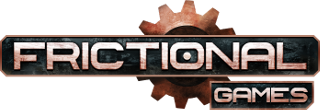Oh you did? Well then, I salute you sir! However even if you managed to get the model with the skeleton inside the model viewer without it crashing, I suggest you make a test animation before you start with the real animations as you might pick up some new problems.
About the texture. The model in the image you showed now looks alot better as the the skin looks alot more organic with the normal map and the specular. However those UV seams are quite nasty and are really in the way of making the texture look as good as possible. You could manually fix it by using the heal brush/spot heal brush on those bad parts in the normal map inside photoshop. If you're using gimp it should have a similiar tool. But...When it comes to making texture maps for monsters/characters/creatures you genrerally want to use another method for much better results.
So basically this is how it works (there are different methods out there and I am not a pro, but this is what I personally use and it gives me great results. It might be more extra work but in the end it's all worth it if you want your model to look more proffesional):
First you make a high poly detailed mesh with sculpting which is nothing new. Then you paint the sculpt using various texture-painting tools that Mudbox or Zbrush has (Zbrush has much better tools but is harder to learn and doesn't have a free version). After that you retopologize the high poly mesh so it has an acceptable poly count. Then comes the UV unwraping and after that, this how you make the best possible texture maps including diffuse map, AO map, cavity map and normal map:
You use a program called "Xnormal" which is completely free. It basically bakes various types of texture maps using high poly model data into your low poly model. It's very easy to use and there are plenty of tutorials showing you how to do it. You start by importing the high poly mesh that you sculpted with bunch of detail and textured(painted) using Mudbox/Zbrush, then you import your low poly mesh with all the UVs ready. After that you simply choose what kind of maps you want to bake from your high poly mesh and the program will simply bake it into your low poly mesh's UVs. You might need to "clean up" some of the maps that the program will bake which is very usual, but it's fairly simple to to do it by mostly using the heal brush and the extra work is all worth it.
The AO and Cavity maps can't be applied in the material editor but you can simply apply them inside photoshop on top of your diffuse (the "colors") and if you do that your diffuse will look a hell of a lot better. Here's an example of what I'm talking about:
![[Image: ffTtCfX.jpg]](http://i.imgur.com/ffTtCfX.jpg)
(In the first image I only have the base colors from the painted high poly sculpt. On the second one I have AO and cavity maps applied as "Multiply" layers on top of the colors layer which as you can see, adds depth to the texture.)
This method is probably too late to use for this monster that you made as you already have all the textures and the normal map (your diffuse looks quite good actually), unless you want to take the extra time and improve the high poly mesh of yours inside Mudbox and make new texture maps. You won't have to re-do the low poly mesh though. It's up to you. But if you want to improve I advice that you at least try this method on your next monsters/creatures (if you're planning on making more) and see if it works for you.
As said, if you have further questions I'll be happy to help you






 Search
Search Member List
Member List IRC
IRC Help
Help


![[Image: ffTtCfX.jpg]](http://i.imgur.com/ffTtCfX.jpg)

